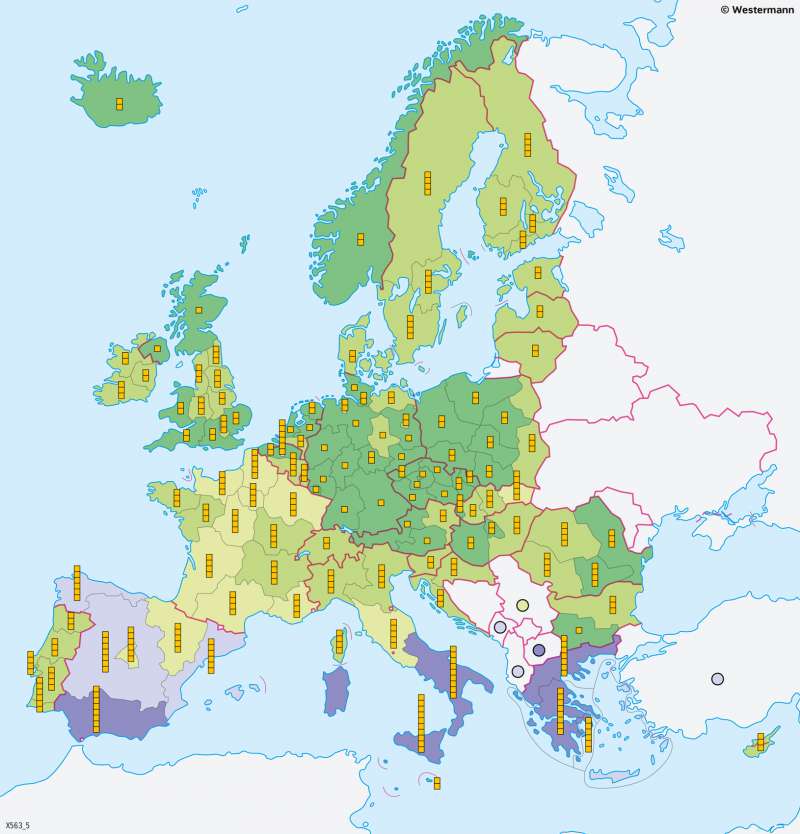European Economic Area (EEA) - Regional unemployment
European Union
978-3-14-100890-6 | Page 67 | Ill. 5

Overview
Unemployment has been a problem in many EU countries for decades, the scale of which has tended to increase as a result of the financial and European debt crises from 2007 onwards. The EU average unemployment rate was at a temporary low of 7 per cent in 2008, but then rose to 10.3 per cent in 2013. Since then, it has fallen again (2020: 7.4 per cent). Unemployment affects the EU countries differently. The economically weak, peripheral regions in the south and east suffer the most.
Statistical recording of unemployment
To determine the unemployment figures, the EU relies on the unemployment statistics of the individual countries. For the purpose of an interregional comparison of levels, these are combined with the EU's own sample surveys. Due to this harmonisation, the EU figures differ somewhat from the national data. The unemployment rate does not include underemployment in structurally weak agricultural regions or short-time work in some branches of industry.
Employment structure and unemployment rate.
There is a strong correlation between a country's employment structure and unemployment rate. With few exceptions, the rule is that regions with low production levels and high employment shares in agriculture suffer above average from unemployment. The highest regional unemployment rates are currently registered in Greece, Spain, the southern parts of Italy, Slovakia, and the north of Ireland. Many of these areas are affected by high migration.
Reasons for high unemployment rates
The high unemployment rate is - apart from the direct effects of the economic crisis from 2007 onwards - a consequence of various changes on the labour market. The long-term causes include the continuous automation and rationalisation of all production, distribution, and service activities for the purpose of reducing wage and production costs. A second important cause - especially in the last decades - is the progressive outsourcing of an ever-larger part of activities to countries with lower labour cost levels and minimal social and environmental standards. A large part of European consumer goods, be it electronics and household goods, textiles, or shoes, are now produced in China and Southeast Asia, which has forced many domestic sites to close.
Youth unemployment
The precarious situation on the labour market is a heavy burden for the peripheral regions because it is often precisely there - due to earlier birth surpluses - that there is a large potential labour force. The result is disproportionately high unemployment among young people under the age of 25, which exceeds the overall unemployment rate in quite a few countries by a factor of two or three. Greece, Italy, and Spain, among others, are particularly hard hit by youth unemployment, but high youth unemployment is also a major problem in economically strong countries such as Belgium, England, or Sweden. Only a few countries such as Germany, the Netherlands, and Austria have significantly below-average figures.




